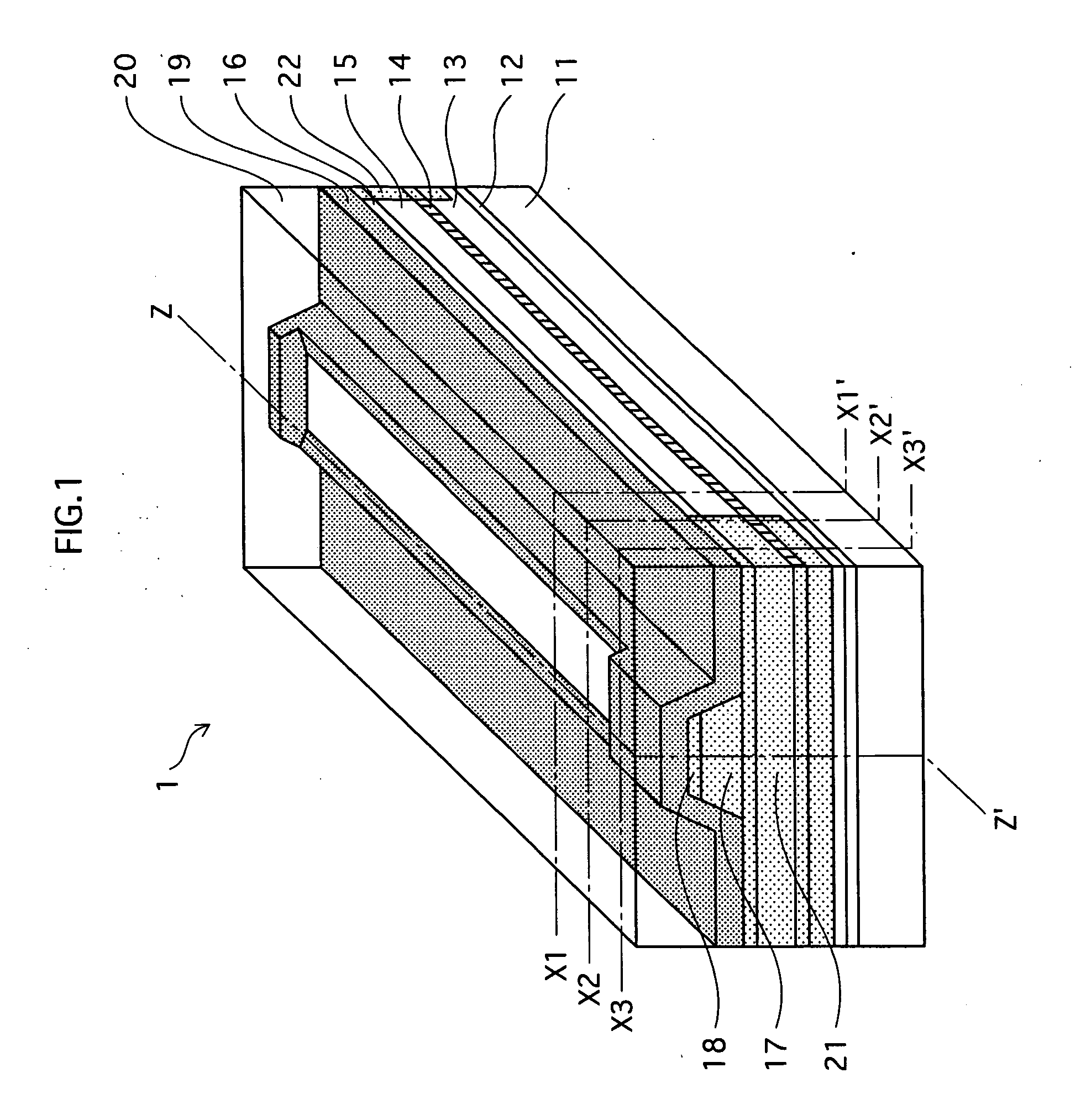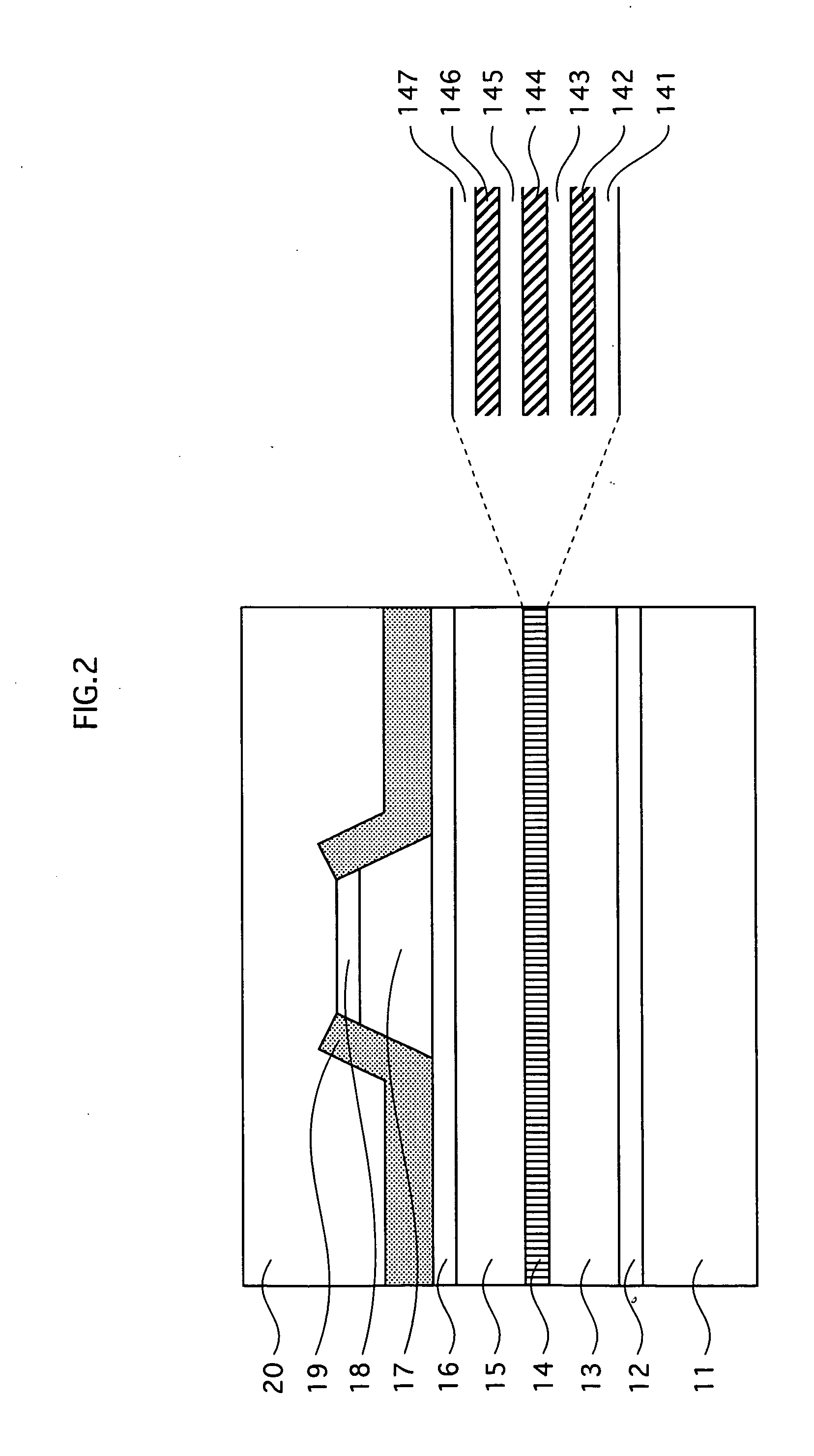Semiconductor laser
a laser and semiconductor technology, applied in the direction of semiconductor laser structure details, semiconductor lasers, semiconductor laser arrangements, etc., can solve the problems of reduced injecting current, noise and jitter, and disadvantaged light output, so as to increase the threshold current and reduce the cod
- Summary
- Abstract
- Description
- Claims
- Application Information
AI Technical Summary
Benefits of technology
Problems solved by technology
Method used
Image
Examples
Embodiment Construction
[0042] A semiconductor laser pertaining to a preferred embodiment of the present invention is described below while referring to the diagrams.
Structure
[0043]FIG. 1 is a perspective view showing a semiconductor laser 1.
[0044] Semiconductor laser 1 is formed from an n-type semiconductor substrate 11, an n-type buffer layer 12, an n-type cladding layer 13, a quantum-well active layer 14, a p-type 1st cladding layer 15, an etch stop layer 16, a p-type 2nd cladding layer 17, a p-type cap layer 18, a current blocking layer 19, and a p-type contact layer 20 layered in the stated order. P-type contact layer 20 is depicted as being transparent for ease of viewing.
[0045] The layers from n-type cladding layer 13 to p-type 2nd cladding layer 17 structure an optical waveguide, and a reflective film (not depicted) is coated on a light-emission end surface (near end in FIG. 1) and the end surface opposite the light-emission end surface to thus structure an optical resonator.
[0046] The reflec...
PUM
 Login to View More
Login to View More Abstract
Description
Claims
Application Information
 Login to View More
Login to View More - R&D
- Intellectual Property
- Life Sciences
- Materials
- Tech Scout
- Unparalleled Data Quality
- Higher Quality Content
- 60% Fewer Hallucinations
Browse by: Latest US Patents, China's latest patents, Technical Efficacy Thesaurus, Application Domain, Technology Topic, Popular Technical Reports.
© 2025 PatSnap. All rights reserved.Legal|Privacy policy|Modern Slavery Act Transparency Statement|Sitemap|About US| Contact US: help@patsnap.com



